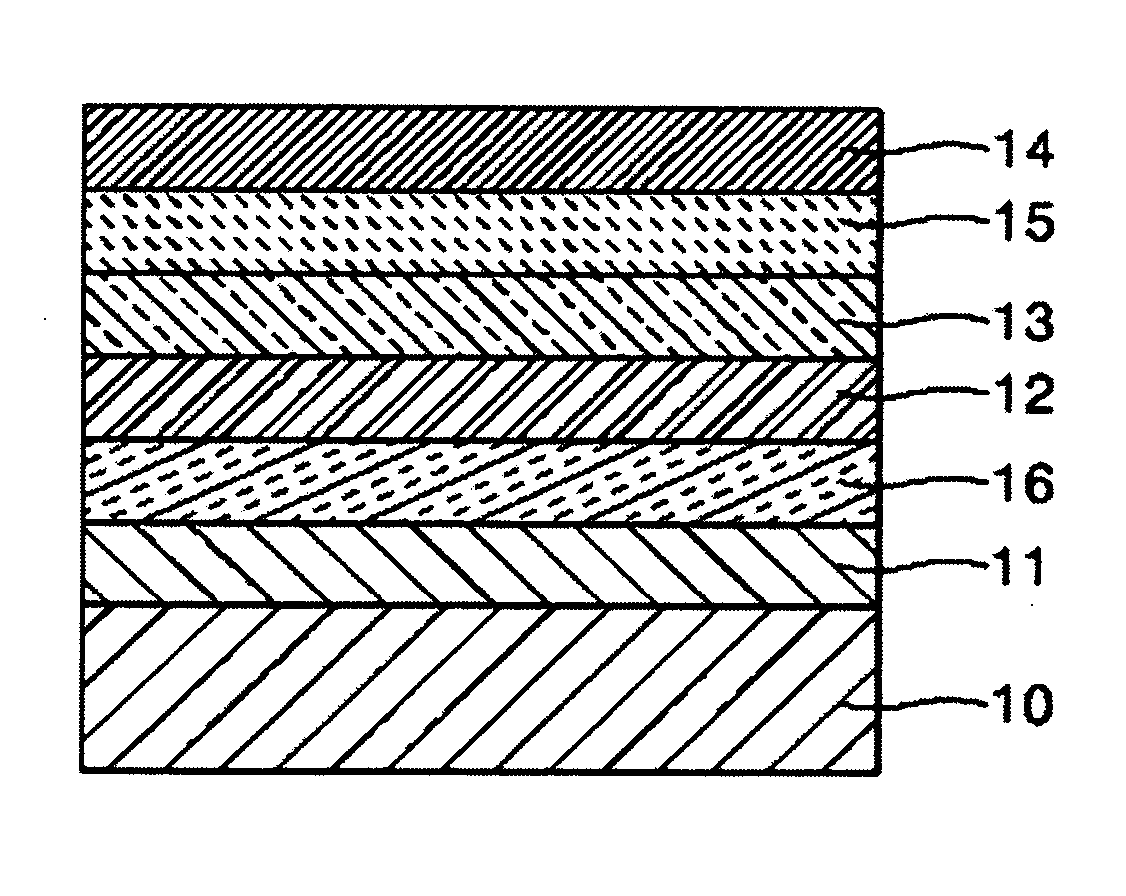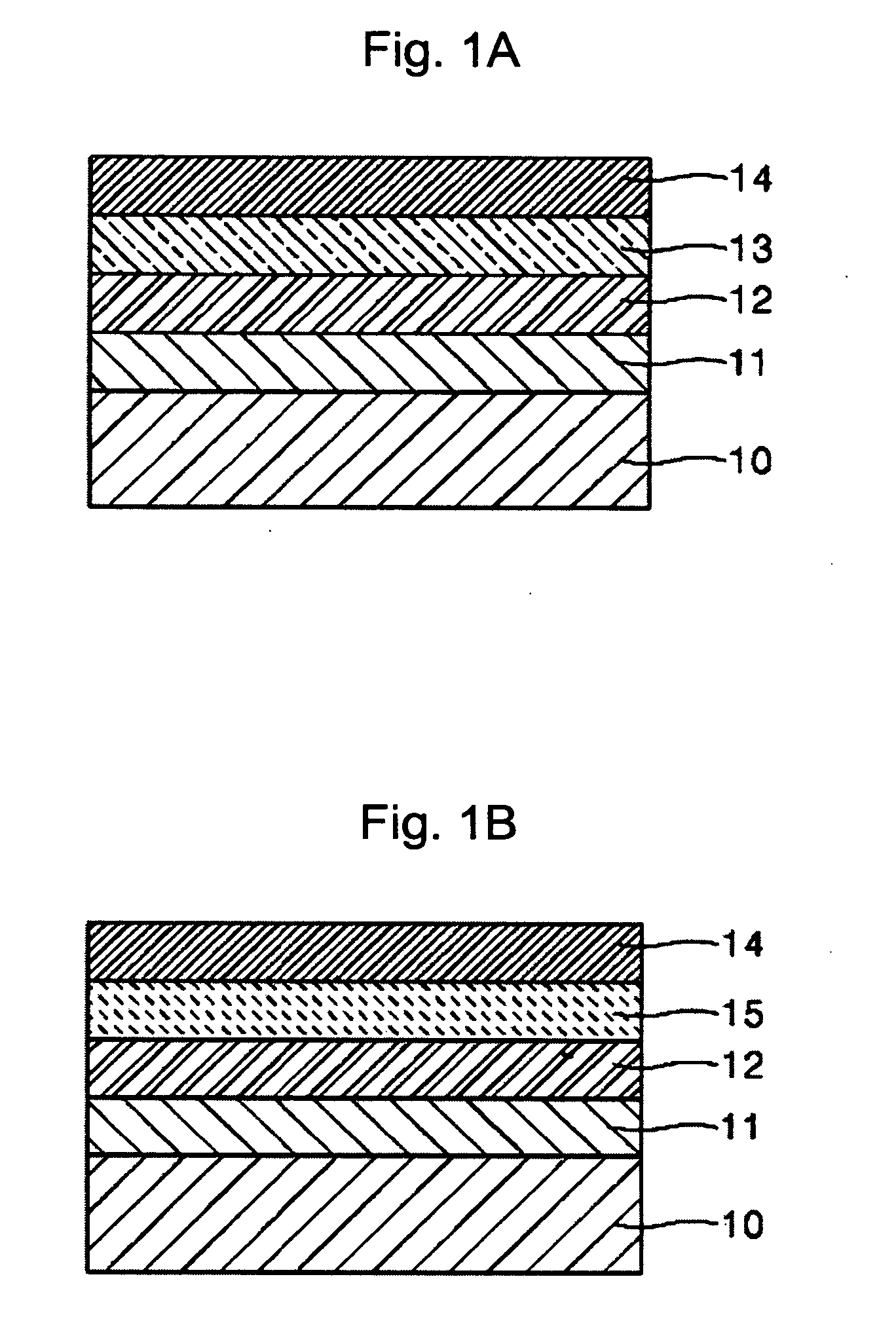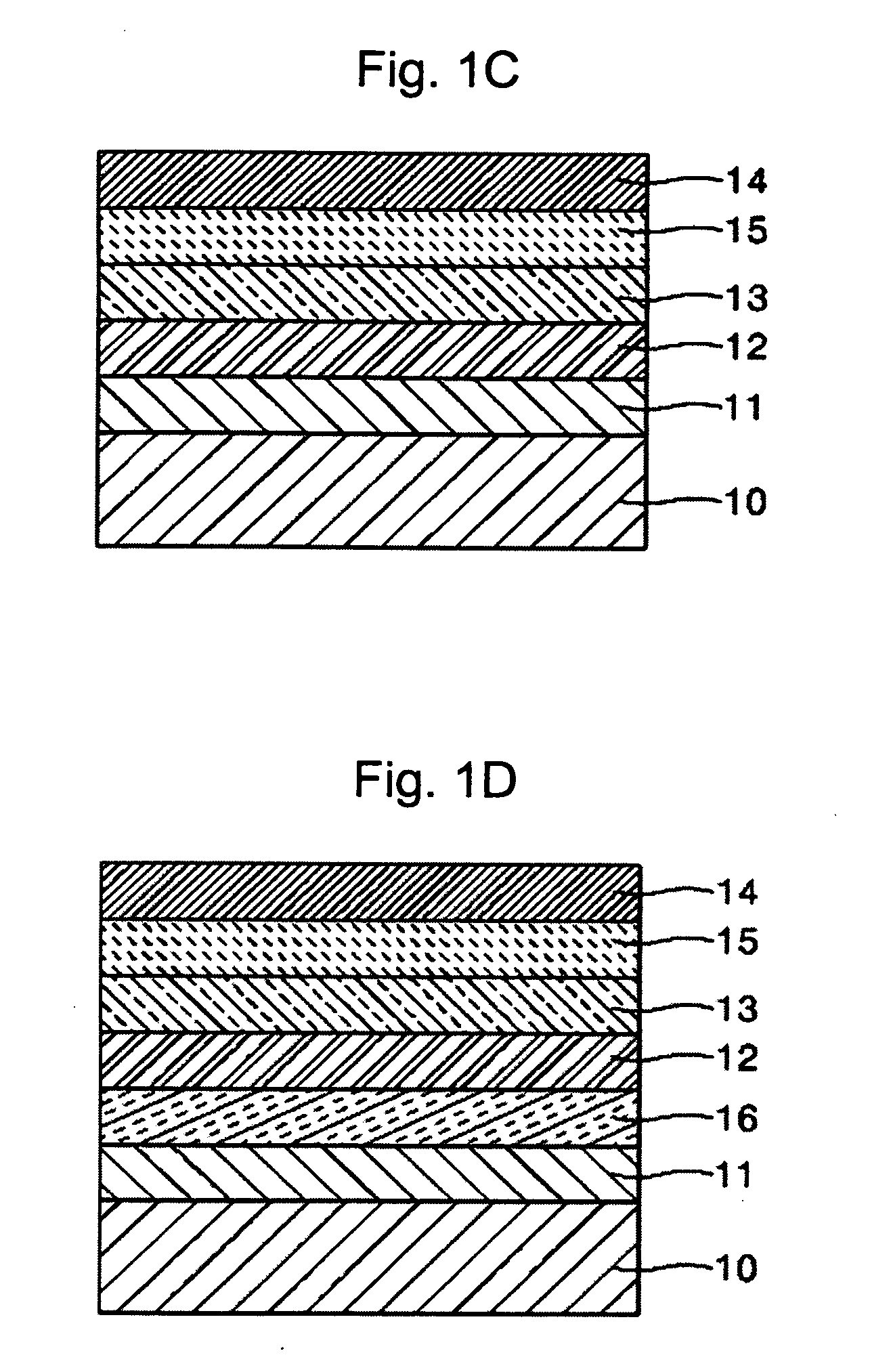Composition of conducting polymer and organic opto-electronic device employing the same
a technology of optoelectronic devices and conducting polymers, which is applied in the direction of thermoelectric devices, conductors, transportation and packaging, etc., can solve the problems of reducing the efficiency and lifetime of organic electroluminescent devices, and achieve the effect of low water uptak
- Summary
- Abstract
- Description
- Claims
- Application Information
AI Technical Summary
Benefits of technology
Problems solved by technology
Method used
Image
Examples
example 1
Composition of PEDOT Conducting Polymer and Ionomer
[0105] An ionomer represented by Formula (6) available from DOW CHEMICAL was dissolved in a mixed solvent (water:ethanol=4:6) to obtain a solution including 1.0 wt % of the ionomer. PEDOT was then polymerized according to a known synthesis method (Groenendaal et al. Advanced Materials, Vol. 12, No. 7, p481, 2000 which is incorporated herein by reference). More particularly, 3,4-ethylenedioxythiopene (EDOT) commercially available as Baytron M from H. C. Starck was polymerized in a ratio of 10 wt % with respect to the weight of the ionomer represented by Formula (6) in the solution by oxidative chemical polymerization to complete the desired composition.
[0106] in which a=1, b=1, x=1, y=1, z=1, M is H, m=5, and n=5.
example 2
Composition of PANI Conducting Polymer and Ionomer
[0107] An ionomer represented by Formula (6) available from DOW CHEMICAL was dissolved in a mixed solvent (volume ratio of water:2-propanol=4:6) to obtain a solution including 2.0 wt % of the ionomer. Polyaniline (PANI) was then doped with camphor sulfonic acid to obtain a conducting polymer. Subsequently, PANI and the solution including 2.0 wt % of the ionomer were mixed in a weight ratio of 1:6 to complete the desired composition.
example 3
Composition of PEDOT Conducting Polymer and Ionomer
[0108] An ionomer represented by Formula (7), i.e., poly(4-styrenesulfonic acid-co-maleic acid) available from Aldrich was dissolved in water to obtain a solution including 2.0 wt % of the ionomer. PEDOT was then polymerized according to a known synthesis method (Groenendaal et al. Advanced Materials, Vol. 12, No. 7, p481, 2000). Subsequently, PEDOT and the solution including 2.0 wt % of the ionomer were mixed in a weight ratio of 1:10 to complete the desired composition.
[0109] in which m=100, n=200, and M is H.
PUM
| Property | Measurement | Unit |
|---|---|---|
| thickness | aaaaa | aaaaa |
| thickness | aaaaa | aaaaa |
| thickness | aaaaa | aaaaa |
Abstract
Description
Claims
Application Information
 Login to View More
Login to View More - R&D
- Intellectual Property
- Life Sciences
- Materials
- Tech Scout
- Unparalleled Data Quality
- Higher Quality Content
- 60% Fewer Hallucinations
Browse by: Latest US Patents, China's latest patents, Technical Efficacy Thesaurus, Application Domain, Technology Topic, Popular Technical Reports.
© 2025 PatSnap. All rights reserved.Legal|Privacy policy|Modern Slavery Act Transparency Statement|Sitemap|About US| Contact US: help@patsnap.com



